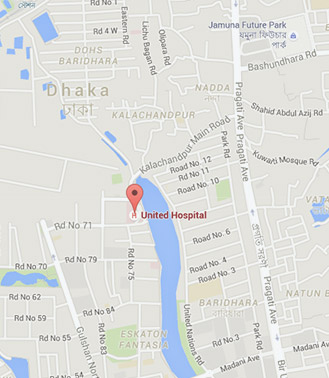A Patient with Headache Develops Dark Urine.
Dr Nazmul Kabir Qureshi, Dr Syeda Fahmida Hossain, Dr Fazlul Haque, Dr Afsana Begum, Dr Md Iqbal Hossain, Dr Pradip Ranjan Saha.
Department of Medicine, United Hospital Limited.
A 50-year-old male was admitted to medicine department of United Hospital on August 15, 2013 with the complaints of feverish feeling, headache and fatigue for 4 days.
Routine blood tests including MP, dengue NS1 antigen were done, the only positive finding was low platelet count (98x10^3). Two days later, he became afebrile, but his headache and weakness became much troublesome. He had just returned from Nigeria where he had suffered from malaria 10 times and was treated with quinine. Clinical examination revealed: BP 100/70 mmHg, congested conjuctiva, jaundice, flushed skin, tender hepatomegaly and no fever and meningeal irritation. Dengue IgM positive was positive with platelet count 21.4x10^3, Serum bilirubin 3.70 mg/dl and negative viral markers.
Next day his headache got worse and he became febrile (104ºF). CT of brain revealed no abnormality and MP and ICT for malaria revealed plenty trophozoites of Plasmodium Falciparum (figure) and ICT-for Malarial parasite-Positive (P. Falciparum).
Combination of artemether and Lumefantrine (Coartem) were started immediately. After two doses, his condition improved but developed dark urine due to hemoglobinuria. A day later, he became symptom free with negative MP test, negative Hb in urine, normal S. Bilirubin (0.73) and platelet count of 94 X10^3/µl and was discharged with the dual diagnoses of Black water fever (BWF) with Dengue fever.
With 216 million cases per year, malaria caused 655,000 deaths and 86% of them were children under five years. BWF, resulting from possible acquired immune pathogenesis, is characterized by fever with acute intravascular haemolysis presenting with dark urine (haemoglobinuria), jaundice and is caused by P. falciparum mono or mixed infection of P. falciparum and P. malariae. High parasitaemia, non-immune residents, ingestion of mostly quinine and rarely other anti-malarial drugs, such as artemether-lumefantrine have been reported to be associated with BWF.
This case presents a rare entity by concordant presence of BWF and Dengue fever and precipitation of BWF by less-reported drug artemether-lumefantrine.
|
Figure : Blood film for MP showing trophozoites.
|

|




